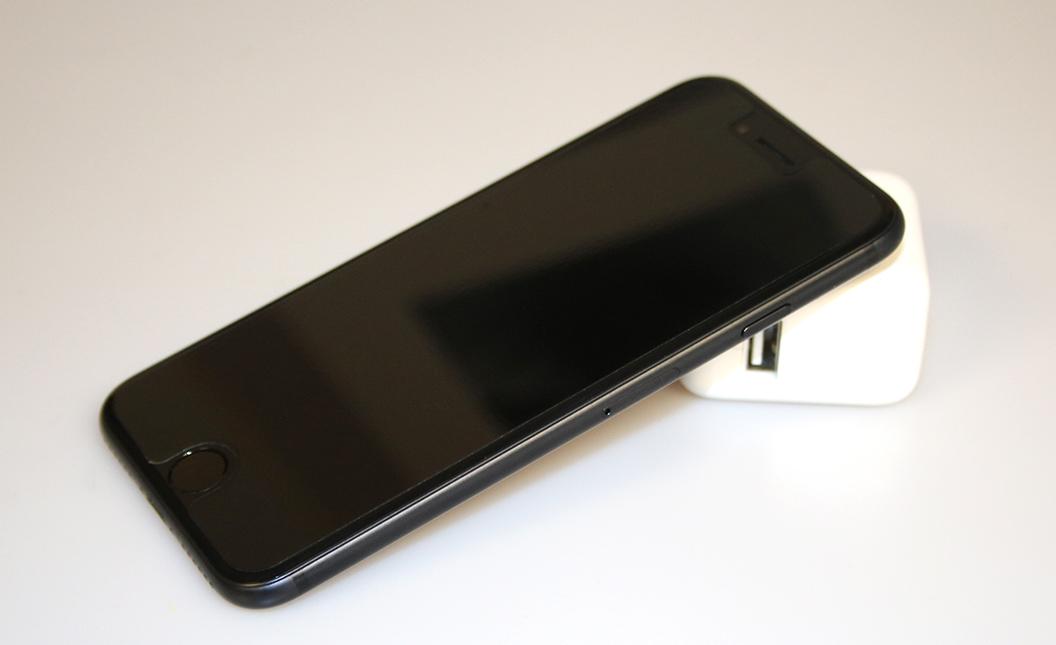Photo Illustration by Bryce Owen ’17
By Hayden Welty ‘19 & Andrew Jordan ’18
THE ROUNDUP
Since the death of Steve Jobs, Apple Inc. has been the most profitable company in the world, yet they are seemingly putting minimal effort into improving their new products.
With the announcement of the iPhone 7 came the news that Apple was replacing their popular headphones with something called AirPods.
These AirPods are a $150 version of Apple’s traditional headphones; they are wireless, have a battery life of more than five hours and possess a handful of other small improvements.
“Introducing AirPods. Simplicity and technology, together like never before. The result is completely magical,” says Apple on their website about the new product.
While we’re pretty sure we can all agree that Apple is definitely sugar coating it a little bit, we also believe that Apple is tricking their customers into buying yet another one of their products without profoundly impacting the quality of the product.
And while we’re not saying that Apple products are inherently lousy, we do believe that the severe lack of betterment in their products is unacceptable: there is a painful lack of creativity.
When is the last time an Apple product had a groundbreaking new feature that thoroughly enhanced and enriched the user experience? And we don’t mean a new menu, style or design; we’re talking about a quality improvement.
The old headphones were perfectly fine and there was no need to replace them; in fact, there are many people who really like using Apple’s old version of headphones.
At the end of the day, does it really make that much of a difference whether headphones are wireless or not? Does it make a $150 difference?
The market will decide.
With the release of the iPhone 5, Apple completely changed the size of the 30-pin charger they traditionally used for the first four generations of Apple products into a brand-new 19-pin charger.
And every iPhone after the fifth generation used this smaller version; however, many accessories and products, like docking stations, relied on the size and shape of the old charger.
This fundamental change forced those companies to remake all their old products and compelled consumers who wished to use these products to buy brand new ones. Since each charger was incompatible with one another, consumers also had to buy new chargers as well.
All this was done for no clear reason: This change did not improve the quality of the product.
When Samsung released the Galaxy S5 April 11, 2014, it was one of the first of its kind: It was water resistant. Two years later, Apple finally caught up, making the iPhone 7 water resistant.
“There’s no real world shocking innovation happening anymore from Apple. It was nine years ago that the iPhone came out … since then it’s been giving us bigger screens and smaller screens … and we go along,” said Stanford professor Vivek Wadhwa during an interview with CNBC news. Wadhwa is saying that Apple is no longer putting out new ideas, they are simply trying to sell old ideas.
Google, Samsung and Microsoft are all testing and producing brave new innovations, just to keep up with Apple. Meanwhile, Apple waits for those companies to perfect the technology before, and then they use the technology themselves.
Many people are starting to notice, as IndustryLeaders.com reports that consumers are switching from Apple to Android at the highest rate in the last decade. Although this may seem small and insignificant, Industry Leaders also reported that this trend is devastating to the producers and consumers in China, as sales are down 11 percent.
Another deliberate change by Apple that makes their customers unnessarily spend additional money is the MacBooks’ chargers. As they did with phone chargers, they changed the size of the computer plug once again, costing consumers more money.
Do you see a pattern here? It’s no wonder Apple has a market value of around $560 billion.
All this, despite the fact Apple’s innovation has been minimal over the last five years. And still, they remain in control of one of the largest and most lucrative markets in the world.
And despite the fact that most of the information I’m telling you is common knowledge, we continue to buy their products anyway. Their astounding market value is further proof of Apple’s eternal quest for more capital – even if they have to unnessarily change the chargers of their products, they will continue on their quest for cash.
In the interest of full disclosure, between the two of us we own two iPads, an iPhone, an Apple Watch, and a Macbook. We enjoy Apple products, but we know we could be miles ahead of where we are when it comes to innovation.
Apple knows we’ll probably just keep on buying their stuff anyway because we’re too lazy to switch, and they fully understand the essentially monopoly they have on the American smartphone market. And based on what we’ve seen, they have no qualms abusing consumers’ wallets for their own good–the recent iPhone 7 is just another example of this.





















